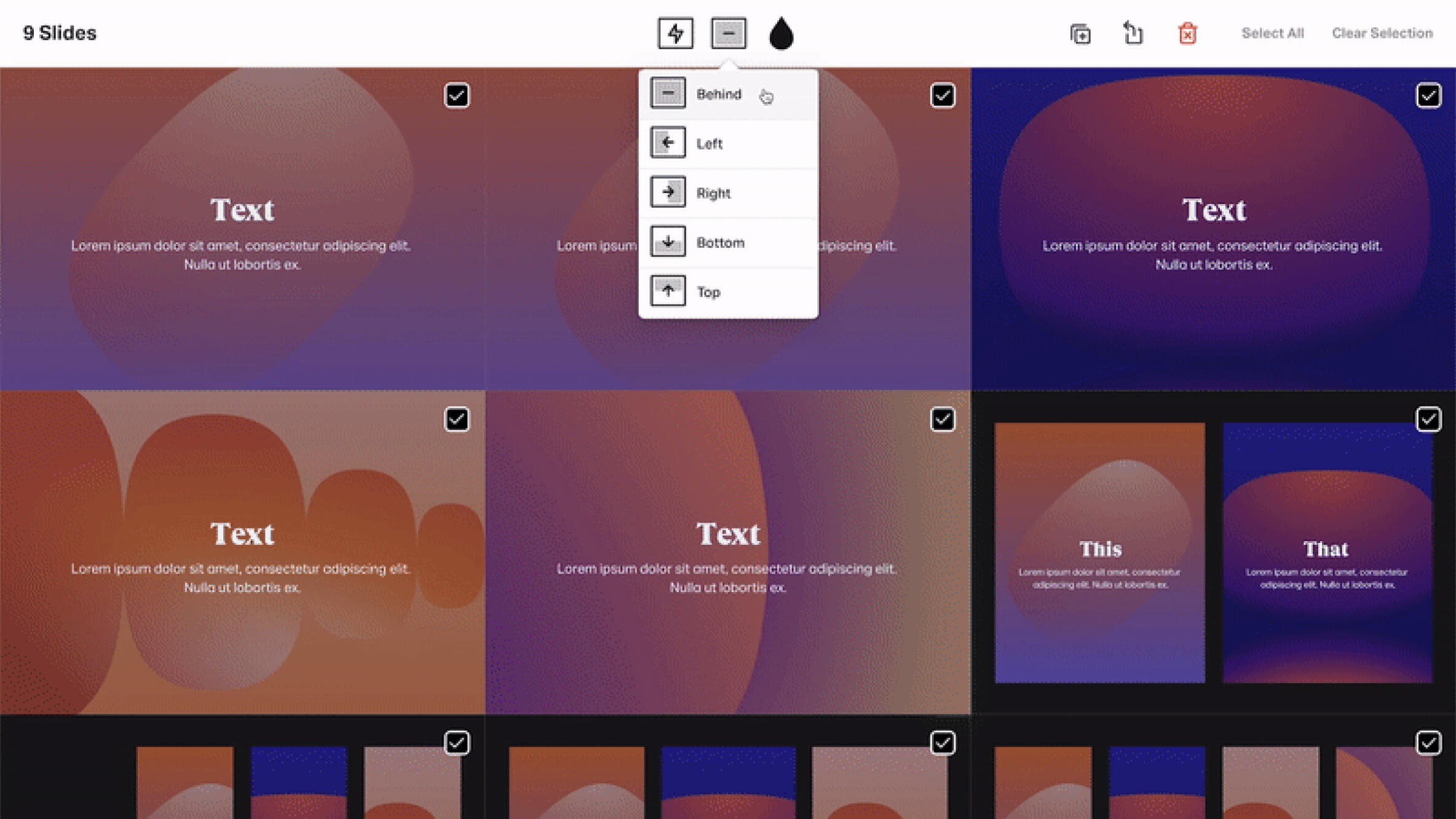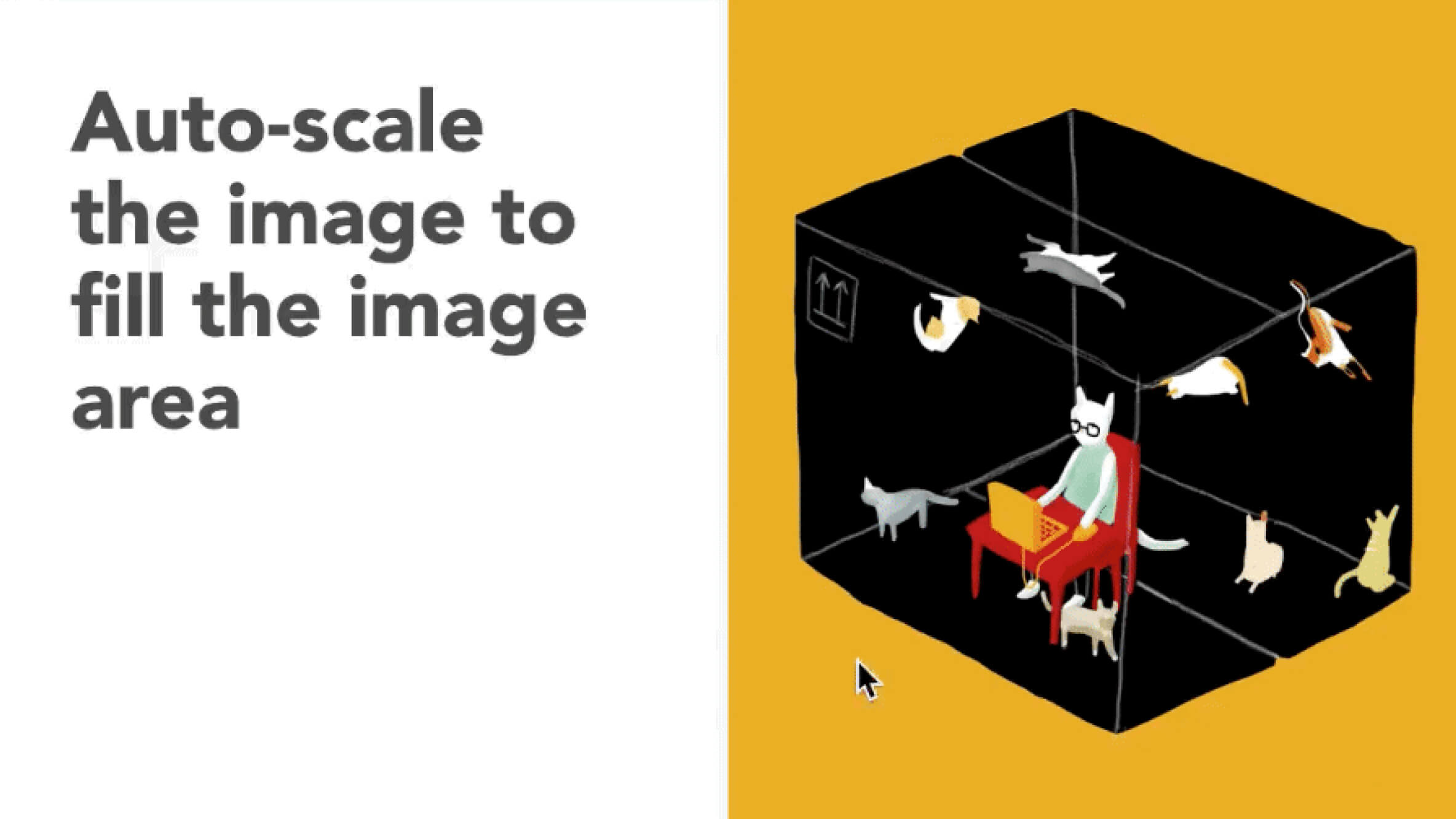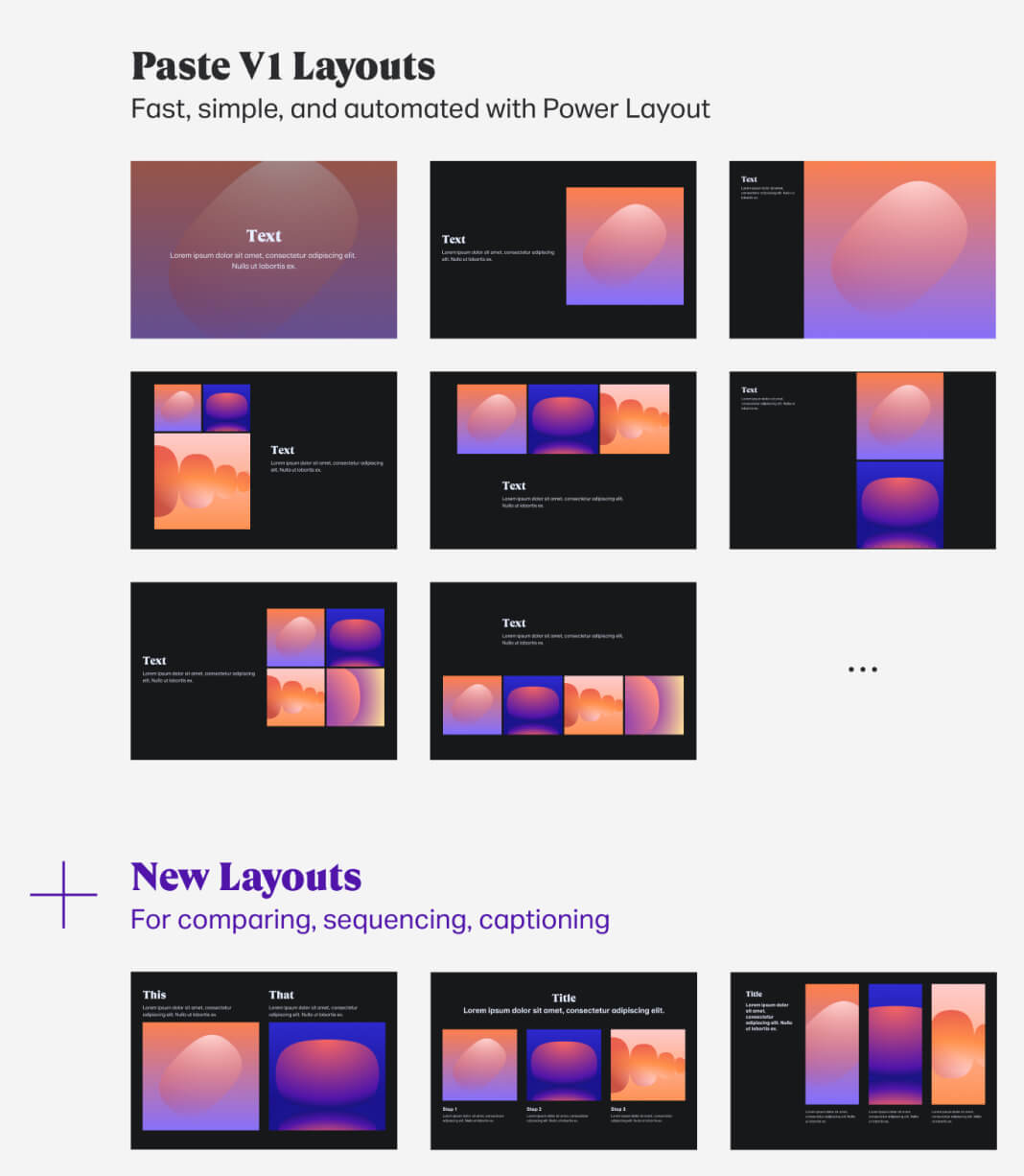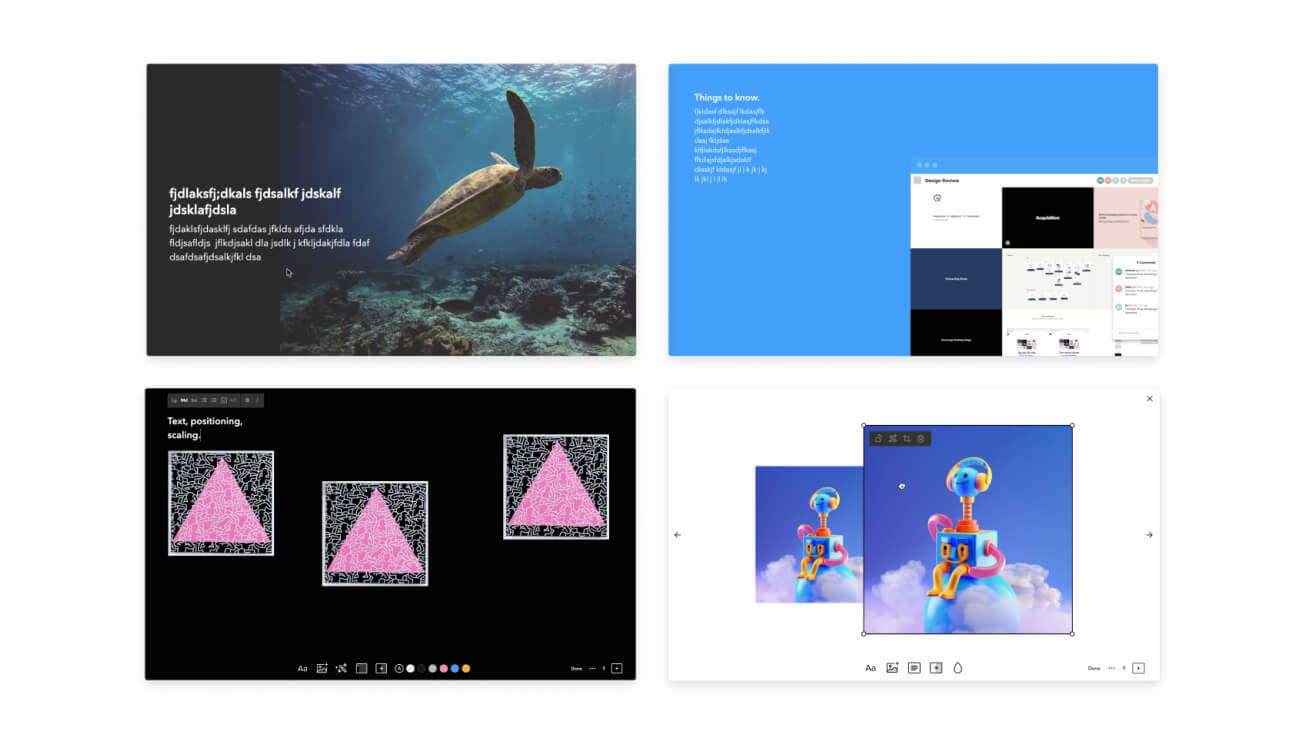People love Paste®.
We know this because an overwhelming majority of customers say that once they try Paste, it’s hard to go back to other presentation tools. All the others seem to force users to suffer the same fate––fiddling with layouts and wrestling with static templates.
Previously, we talked about the challenge of keeping our bicoastal team aligned using existing online tools. After trying everything to help us work better together, we realized a new way of sharing visual ideas was needed. Something that would get our ideas out fast and design slides for you, like magic.
Layouts that move with you
Paste was designed to help people focus on the flow of the narrative and adjust quickly as things change, just like they do in creative and collaborative work. A key feature here is Power Layouts, which automatically adapts to your content and acknowledges your intent.

Power Layout options in Paste V1 asked the creator “Is your intent to Intro, Show, or Tell?” and transformed the relationship between text and media with a single click
Balancing power with simplicity
It’s common wisdom that slides with less density (less copy, fewer images) make them easier for viewers to digest. But when we set out to better understand how customers used Paste, we learned that some stories needed richer layouts to explain well, especially when multiple ideas had to be shown at once.
We heard from people who wanted a bit more (slide layout options, advanced formatting) and those who believed less was more. Sometimes this was even the same customer.
The challenge: New layout capabilities that enable comparing, sequencing, and captioning within a single slide
Our mission as designers and engineers was to strike a balance and deliver on Paste’s promise of beautiful slides every time, without compromising its simplicity and focus. So we got busy prototyping.
Human vs Machine
As we explored different approaches to enable richer layouts, we needed to answer some big questions around the ideal relationship between user control and machine automation.
Here are questions we asked of our prototypes behind-the-scenes and the insights that shaped our ultimate solution.
Q: How might Paste give creators more control while continuing to fully assist in automatic layout and formatting?
Since the early days of Paste, we were interested in an always-on approach to machine assistance that could adapt to the input of the creator. Like an autopiloting system, we believed Paste should:
Always direct you to good outcomes by default
Allow you the flexibility to set a new direction
Automatically resume assistance by adapting to the new direction
We revisited old prototypes to see if we could glean new insight.

An early prototype exploring Power Layouts for Paste 1.0. A simple drag operation adjusts the visual weight of a slide (Made in Framer Classic)
A key insight was that tuning your layout for communication and impact isn’t a one-shot operation. We saw how Paste could adapt in real-time with responsive layouts based on your refinements.
Q: What happens when we add freeform positioning abilities to Paste’s existing container-based layout approach? How might Paste keep its promise of ‘Never a bad slide’ in these situations?


Abandoned prototypes which added freeform layout abilities to Paste’s existing slide editor
One of our prototypes was really different––it opened up new layout outcomes by removing all asset position and scale constraints. We thought maybe if we tried the route of freeform layouts, we could potentially solve it. Let people do whatever they want and help them “fix” it with assistive features and controls.
But the problems quickly compounded. Slides quickly fell into the same trap of other presentation tools––the layout would erode as content evolved, which required extra work to address and a designer’s attention to fix it. By opening Pandora’s box to every outcome, creators wasted time and energy thinking about (and tidying up) the layout. We abandoned this approach to dig deeper into Paste’s roots in web technology.
Q: How can advances in web technologies, in particular container-based design tools, make advanced slide layouts faster and more intuitive?
Taking cues from website-building tools and patterns of responsive web design, we kicked off a series of prototype iterations that dug deeper into the container-based layout approach than Paste ever did.
An early iteration of the container-based prototype offered the flexibility to insert containers at any juncture. While powerful, it was tedious to manage rows versus columns, like doing layout in a spreadsheet.
Inspired by Japanese multi-compartment meal boxes, we codenamed this direction ‘Bento.’ It took fifteen iterations of Bento to arrive at a solution that enabled more flexible and powerful layouts without losing the speed and focus that people love about Paste.
In the end, the text and media pairings that enabled the original Power Layouts experience were the key building blocks for the Bento Layout System. With this approach, the speed and flexibility of Paste was multiplied to even greater effect without sacrificing simpler use cases.
Two new Power Layout options ‘Compare’ and ‘Multi’ were added as common starting points. Individual columns could also be added and removed at any time as the slide layout adapts automatically.
With Bento, Paste guides creators toward beautiful layouts while giving them flexibility to add or remove structure as needed
The name Bento stuck for the public release of Paste 2.0. (It was easier and more fun to say than “compartment-based layout system.”) Like arranging a beautiful meal, Paste now lets you drag and drop media between compartments, which snap everything into place. No mess made, no cleanup required.
A conversation between creator and tool
From its inception, Paste was a fundamentally different way to create and shape presentations. Bento took it further and established the always-on, machine-aided approach. The creator and tool adapt and respond to the other, like a conversation. It’s a different paradigm than what you might be used to, because we designed Paste to help you focus on what matters most—your content and intent—as it takes care of the busywork.


Paste 2.0 with Bento Layout System is just the beginning. We have big plans for extending the system to enable even more intuitive ways to shape and share your stories with your team and the world. We hope you’ll give it a try.
Bento Layout System wouldn’t exist without the many hands that helped prototype and build it over the years. The Bento launch team: Will Urmston, Larry Fox, Alban Creton, Joe Yuhas, Matt Cullerton, Manpreet Sethi, Tommy Montgomery, and Maedhbh Greene. Special thanks to Andrew Allen, Tara Feener, Eric Rockey, Mark Dawson, and Allen Lau for helping create Paste’s slide editor that would prove critical to the foundation of Paste 2.0

